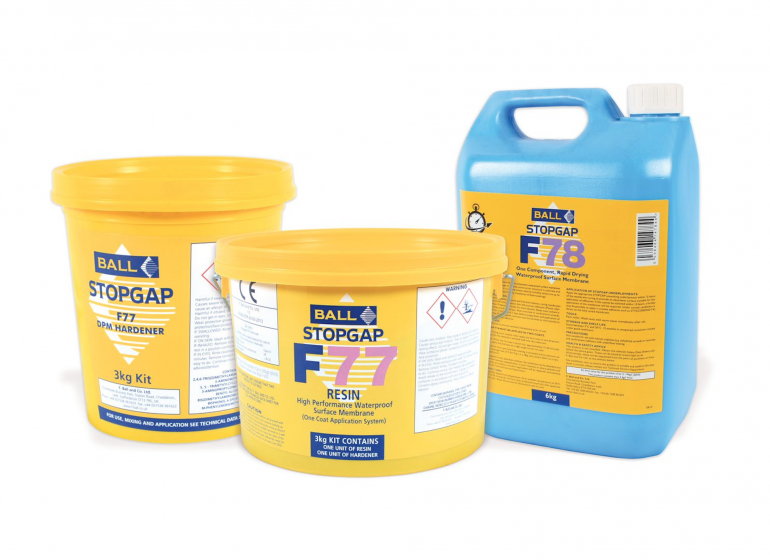What’s so bad about subfloor moisture?
The presence of unmanaged subfloor moisture is one of the most common causes of floor failure in new installations or refurbishments. Over time, excess moisture can cause extensive damage to floorcoverings that may only be resolved through costly remedial work.
It is vital that floor surfaces are properly assessed before floorcoverings are installed. If not tested for and correctly dealt with, moisture can cause floorcoverings to blister, wood to become warped, adhesives to de-bond and carpet underlays to rot. It can also promote the growth and spread of mould and bacteria.
When should you use a WSM?
F. Ball recommends that after removing existing floorcoverings, a moisture measurement test should be carried out. A calibrated digital hygrometer will give accurate readings of subfloor moisture levels, as a measure of relative humidity (RH), which will identify whether a WSM is necessary.
If the moisture levels exceed 75% RH (65% RH for wood floors), a moisture control system should be applied before any floorcoverings are installed.
Which WSM should you use?
When dealing with serious cases of subfloor moisture, with RH levels of up to 98%, F. Ball recommends the use of Stopgap F77, a solvent free two part, one coat,WSM. Stopgap F77 impedes the passage of residual construction moisture and rising damp from affecting subsequent floorcovering installations, allowing early installation of floorcoverings in fast track building programmes. It is pigmented black to allow the user to visually control coverage uniformity.
When facing time pressure, water-based moisture management systems, such as F. Ball’s Stopgap F78, can be used to isolate residual construction moisture where RH values are up to 95%. Stopgap F78 is a solvent free, one component, ready to use system which dries rapidly to provide a WSM. It must be applied in two coats and is pigmented blue to allow the user to visually control coverage uniformity.
On heritage sites where contractors may be working in listed buildings, a loose-lay isolator membrane may be the most suitable option to control subfloor moisture. These laminated sheets are laid directly onto the damp surface and act as a base for new floorcoverings, meaning that new resilient floorcoverings or flooring tiles can be installed while protecting the floor underneath. Loose-lay isolator membranes are quick to install and can later be easily removed, enabling the building to be rapidly restored to its original state.


